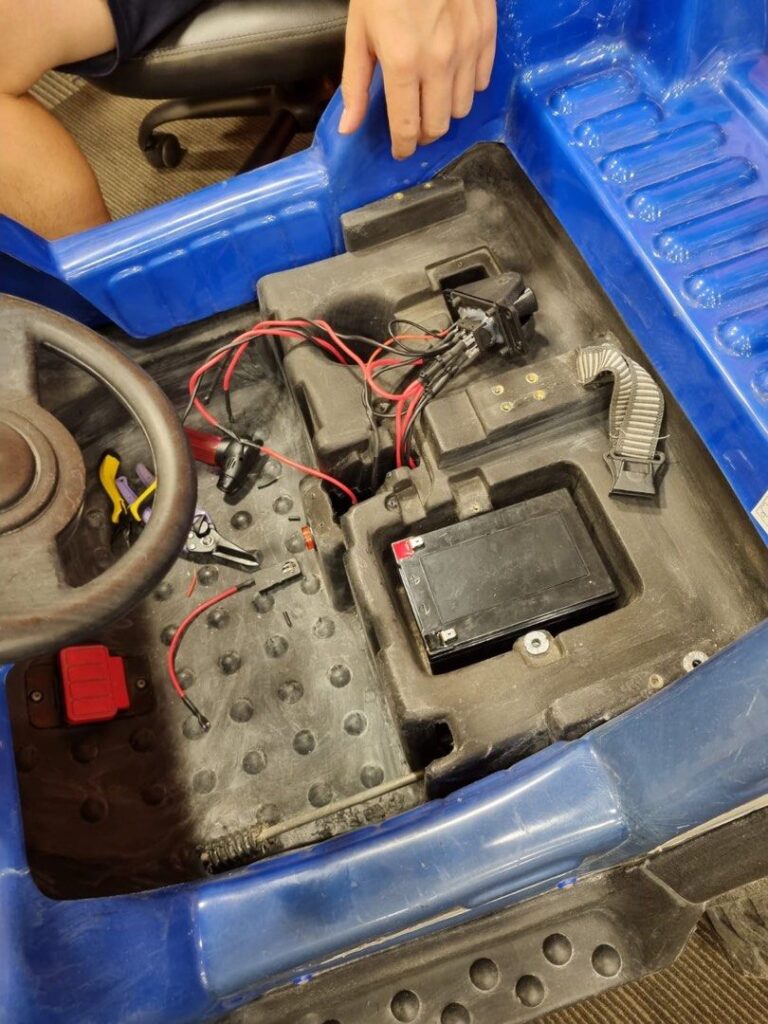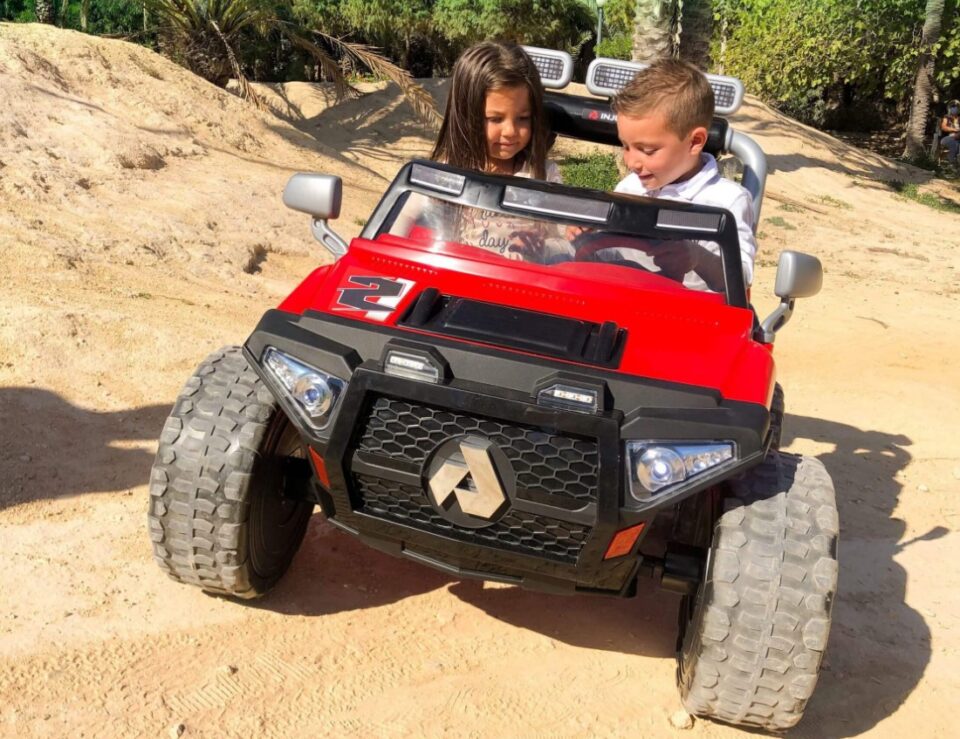Handy Repair Tips and Tricks
Navigating the maintenance and repair of electric ride-on toys can be tricky. Despite the high-quality manufacturing standards ofelectric bikes, minor issues may occasionally pop up. Here are a few expert repair tips and tricks from our very own electric toy.
Troubleshooting Battery Problems
Arguably, one of the most common issues can be traced back to your battery. Keep in mind, batteries generate the lifeblood of electric ride-on cars, which means they require special attention. If the car’s performance starts to wane or not function at all, it could be a battery problem. First things first, check the battery’s connectors. Ensure there’s no corrosion and they’re securely connected. If the car still doesn’t work, try charging it for a full cycle. It’s possible that the battery could be deeply discharged. Should the problem persist, you might be dealing with a dead or dying battery and in need of a replacement. Remember, it’s always best to enlist professional help before making any crucial decisions or potentials risking safety conditions.
Fixing Motor-Related Issues
When your little one’s ride-on car isn’t operating or engaging correctly, it could be a motor-related issue. The engine runs the driving force of these miniature vehicles, and even minor malfunctions can cause disruption. Check the motor’s terminal connectors for corrosion or dirt buildup. Ensure they are properly attached. Should you notice odd noises or overheating, these could be signs of a troubled motor. If you’re facing these issues, your best bet would be seeking consultation from a professional technician.
Preventive Maintenance for Electric Ride-On Toys
Maintenance, like consistent nutrition and love for a child, is also essential for our electric ride-on cars. Here are some preventive measures to keep these joyful vehicles up and running for your child’s adventure.
Regular Cleaning Schedule
Cleaning isn’t just about preserving the car’s aesthetics. Dust and dirt can sneak into mechanical parts and cause friction, leading to wear and tear. Use a soft cloth to wipe the surface and a mild detergent solution for stubborn stains. Keep in mind, never drench the car with water as it may damage the electronic components.
Battery Care Tips
Prolonging the lifespan of the battery is crucial for the long-term performance of these fun vehicles. Charging the battery after each use is a recommended practice. Additionally, avoid overcharging as it can damage the battery’s life cycle. A consistent charging regimen helps extend battery longevity and maintains optimal performance levels.
Tyre Maintenance
Tyres are just as important, given they’re in constant contact with the driving surface. Regularly inspect the tyres for signs of wear or damage. Maintain correct tyre inflation if your model features air-filled tyres. Replacement might be necessary if they’re severely damaged. They ensure your child’s adventures abound with joy and safety. Let their imaginative expeditions unfold with our range of 2-seater electric cars. Embrace the adventure, and experience adventure: KidsVIP’s 2 Seater Electric Car in Canada. Remember, preventive measures can guarantee a smooth, enduring ride.
Understanding Your Child’s Electric Ride-On Toy
Electric Ride-On Toy Basics
Just like any machine, your child’s electric ride-on toy is a combination of various components working together to deliver a thrilling experience. The crucial parts include the battery, motor, switch, and circuit board. Understanding how these parts work together will give you a better insight when troubleshooting problems.
The battery powers the motor, which in turn drives the wheels. The switch is the control point, allowing your child to start, accelerate, or stop the ride-on toy. Lastly, the circuit board is the ‘brain’ of the toy, ensuring everything works in harmony.
Essential Repair Tools
Having the right tools at your disposal can make the repair process much easier. Here are some basic tools you should have on hand:
- Screwdriver set: To open the toy’s casing and fix loose components.
- Voltmeter: To check the functionality of the battery and other electrical parts.
- Wire cutters: To trim or replace damaged wires.
- Soldering iron: To reconnect cut or loose wires.
- Heat shrink tubing: To protect repaired wires from damage.
Electric ride-on toys, like any other electronic devices, may encounter various issues. Here are some common problems that users might face with electric ride-on toys:
Battery Issues

- Not Charging: If the battery is not charging, it could be due to a faulty charger, charging port, or a problem with the battery itself.
- Short Battery Life: Over time, the battery’s capacity may degrade, leading to shorter ride times. Replacing the battery may be necessary.
Motor Problems
- No Power: If the toy is not moving or experiencing a lack of power, it could be due to issues with the motor, wiring, or connections.
- Overheating: Continuous use or overloading may cause the motor to overheat. Letting it cool down before further use can resolve this issue.
Control and Wiring Issues
- Faulty Controls: Malfunctions in the throttle, pedals, or other control mechanisms may lead to erratic behavior or no response from the toy.
- Wiring Problems: Loose or damaged wiring can disrupt the electrical connections, causing various issues.
Safety Features
Emergency Stop Function: Some electric ride-on toys have safety features like an emergency stop button. If it’s activated or malfunctioning, the toy may not operate correctly.
General Wear and Tear
- Tires and Wheels: Worn-out tires or damaged wheels can affect the toy’s performance and stability.
- Body and Frame: Damage to the body or frame may impact the structural integrity and safety of the ride-on toy.
Remote Control Issues: For ride-on toys with remote controls, problems could arise from issues like signal interference, dead batteries in the remote, or a faulty remote control unit.
User Error: Sometimes, the issues might be due to user error, such as not following proper charging procedures, exceeding weight limits, or using the toy in unsuitable conditions.
Software or Firmware Problems
For ride-on toys with advanced features or electronic controls, issues with the software or firmware may lead to malfunctions. Updating or reinstalling the software may be necessary.
To address these problems, it’s advisable to refer to the user manual for troubleshooting guidance, contact the manufacturer’s customer support, or seek assistance from a qualified technician if the issues persist. Regular maintenance and careful use can also help prevent some of these problems.



